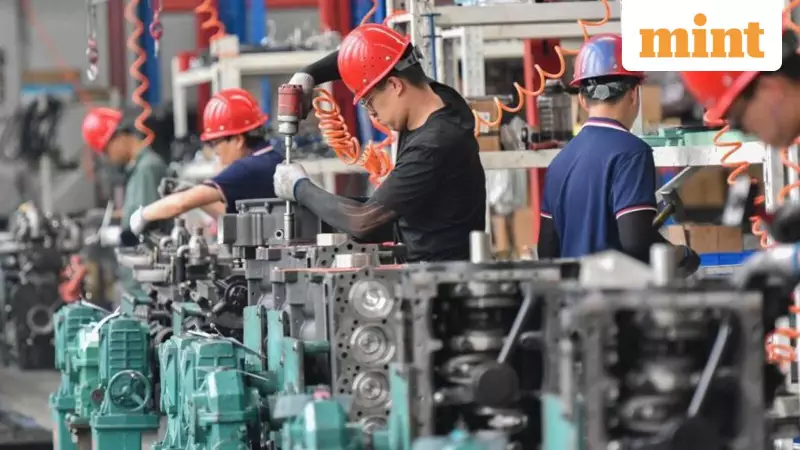
China is experiencing one of the most baffling economic phenomena in recent memory. While official GDP figures continue to show growth, foreign direct investment has collapsed to levels not seen in three decades. This contradiction reveals deeper structural issues within the world's second-largest economy.
The Numbers Tell a Troubling Story
Recent data reveals a startling 90% year-on-year decline in foreign direct investment into China. This isn't just a minor dip—it represents a fundamental shift in how international businesses view the Chinese market. The decline has been so severe that investment levels have returned to what economists last witnessed in the early 1990s.
Behind the Official Growth Figures
While China's GDP continues to show positive growth, experts are questioning what's really driving these numbers. Much of the apparent economic activity appears to be fueled by massive government spending on infrastructure projects and manufacturing capacity that far exceeds domestic demand.
The Manufacturing Overcapacity Problem
China's industrial strategy has created a massive overcapacity issue, particularly in sectors like electric vehicles, solar panels, and batteries. Chinese factories are now producing far more than domestic consumers can absorb, leading to aggressive price-cutting in international markets and raising concerns about market distortions.
Geopolitical Headwinds Intensify
The deteriorating relationship between China and Western nations, particularly the United States, has created significant barriers to investment. Trade restrictions, technology transfer concerns, and political uncertainties have made many multinational corporations rethink their China strategies. Companies are increasingly adopting "China plus one" approaches, diversifying their manufacturing bases to other Asian countries.
Shifting Global Supply Chains
International businesses are actively reducing their reliance on Chinese manufacturing. Countries like Vietnam, India, and Mexico are benefiting from this supply chain diversification. The trend accelerated during the pandemic and has continued as companies seek to mitigate political and operational risks.
Domestic Challenges Compound the Problem
Within China, several factors are contributing to the investment slump. A prolonged property crisis, deflationary pressures, and an aging population have created economic headwinds. Additionally, increased regulatory scrutiny and unpredictable policy changes have made foreign businesses more cautious.
The Road Ahead for China's Economy
Despite these challenges, some analysts believe China still offers significant long-term opportunities due to its massive consumer market and manufacturing capabilities. However, regaining foreign investor confidence will require addressing fundamental concerns about market access, regulatory transparency, and geopolitical stability.
Global Economic Implications
The shift away from Chinese investment has profound implications for the global economy. It could lead to higher costs for consumers worldwide as supply chains reorganize, but also create new opportunities for emerging markets positioned to capture redirected investment flows.





